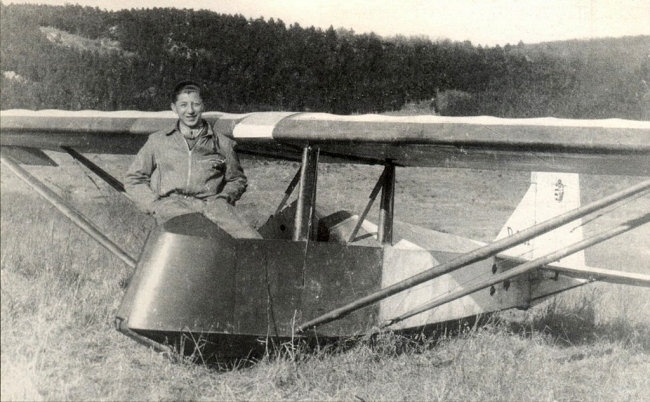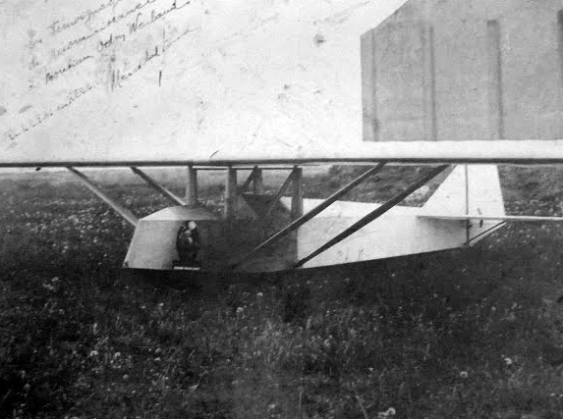A Noteworthy Pilot
This is one of the posts from my old blog, dated 15 January 2010.
After a lifetime as a glider and power pilot, just two weeks short of his 92nd birthday, Polish glider pilot Tadeusz Góra passed away in Swidnik, Poland on the 4th of January. Except for his age, you ask, why is this noteworthy?
It is noteworthy because Góra was the very first FAI Lilienthal Medalist, in 1939. This award was presented to him in recognition of a flight the then 20 year-old made on the 18th of May 1938.
Reports from another pilot predicted great soaring that day. Therefore Gora strapped himself into a Podlaska Wytwórnia Samolotów PWS 101 high performance glider at his home field in Bezmiechowa, in southeast Poland, and headed for Vilnius (Wilno), Poland (now Lithuania), where his folks had retired. He did not quite make it though, only managing to get to Maly Soleczniki, 30 km (18.5 miles) short of Vilnius. Yet the distance covered was 577.8 km (359 miles) and this was a spectacular flight for 1938 (not too shabby even today). He had to wait until 1945 to actually receive the award.
If this were all Góra did, his passing would still be noteworthy. Yet he had a long and distinguished career in aviation.
Born in Krakow (then part of the Austro-Hungarian Empire) on the 19th of January 1918, the family followed his Boarder Guard father from posting to posting. It was a friend of his father who introduced the then 15-year old to aviation. That same year his father retired to Vilnius and Tadeusz joined the Vilnius Aeroclub where he learned to fly gliders and soon had his “A” and “B” badges. He earned his “C” badge at Bezmiechowa in 1935. A year later he received his sports pilot license at Lucko.
Having to repeat his senior year of Primary School, Góra was overheard claiming that “flying is more important than school.”
Góra first began to distinguish himself with an 18 hour duration flight in 1937. He then won the 5th Polish National Gliding Championship four months later.
In 1939, Góra joined other Polish glider pilots in training for the 1940 Helsinki Olympic Games. He showed off a little during that year’s ISTUS International Conference, when Góra managed a 304 km flight from Policho to Bydogszcz.
When the World War II broke out, Góra was first arrested by the Soviet forces, but managed to escape. He then took a round about route to France so that he could join the remnants of the Polish Army and Air Force. When France fell, he went to England with what remained of the military. Flying everything from Hurricanes to Spitfires and Mustangs, he managed 160 flights including 52 combat missions. His efforts were rewarded with the Polish Cross of Virtuti Militari and British Cross of Valor for his participation in the Battle of Britain. He was also finally able to receive his Lilienthal Medal while he was still in England in 1945.
Góra returned to Poland in 1948 and became the CFIG at Bezmiechowa again. He was also able to complete his Gold Badge the same year in the former Grunau, then part of Poland. With a 1950 altitude gain of 5038 meters (16,529 feet), Góra became the second person in the world to earn the Diamond Badge. Five months later, he was awarded with his third Diamond.
In 1953, he moved to Bielsko Biala and became a test pilot for SZD. Joining the Aeroclub there, he remained the CFIG until 1957.
Following the death of Stalin, in 1953, Góra was accepted into the Polish Air Force and allowed to fly with the Warsaw Pact forces. Here he flew Mig-15s and Mig-17s. Still he never got far from his love of flying gliders.
Flying a Mucha Standard in 1962, he won the Polish Nationals. Two years later, he made a personal best with a flight of 630 km (391 miles).
Health problems caused by his 1960 crash in a Mig-19, forced Góra to retire from the Air Force with the rank of Lieutenant Colonel. Yet later, on his 88th birthday, he was promoted to Brigadier General.
He retired to Swidnik where he got his helicopter license in 1977. Two years later he became a CFI in helicopters and trained others until 1981. When PZL-Swidnik sold helicopters to Libya, he went along to train the pilots as part of the contract.
Following his retirement from the Air Force, Góra became a staunch advocate for restoring the old glider site of Bezmiechowa. The SZD Jerzow Salamandra mentioned in Blog #6 (Monday 7 December 2009) had its first flight at Bezmiechowa in the summer of 2009. Góra was delighted to be able to see it fly and to visit with the young people there.
In order to honor him, the Rzeszów Technical University Academic Flying Center in Bezmiechowa was named after Góra and was dedicated by him on the 21st of August 2004. The school, set on the top of the Sionne Mountain, has provided a backdrop for a 2007 film about him called, “The Diary of Pilot Góra.”
Góra was buried with full military honors in the Swidnik Cemetery’s Avenue of Distinguished Citizens.
His Lilienthal medal now rests in a vault at the Bezmiechowa Primary School, which was named for “Polish Glider Pilots,” where it can be viewed upon request. The school crest incorporates the three gulls of the “A” badge, and the students wear this on their school uniforms.
A glider rally is planned in his honor at the gliderport in Bezmiechowa in May 2010. It is intended to commemorate his 1938 Lilienthal Medal flight by encouraging the participants to duplicate Góra’s flight and fly from Bezmiechowa to Maly Soleczniki.
This news came to me 3rd hand from Bruce Stephenson, in England. The information itself was compiled by Jan Szladowski.




 Intro to the Vintage Glider Blog
Intro to the Vintage Glider Blog
Recent Comments